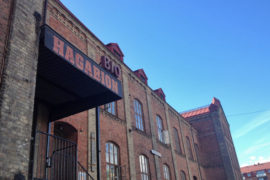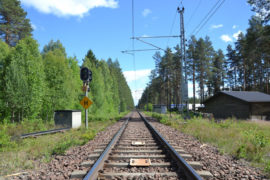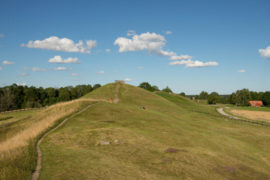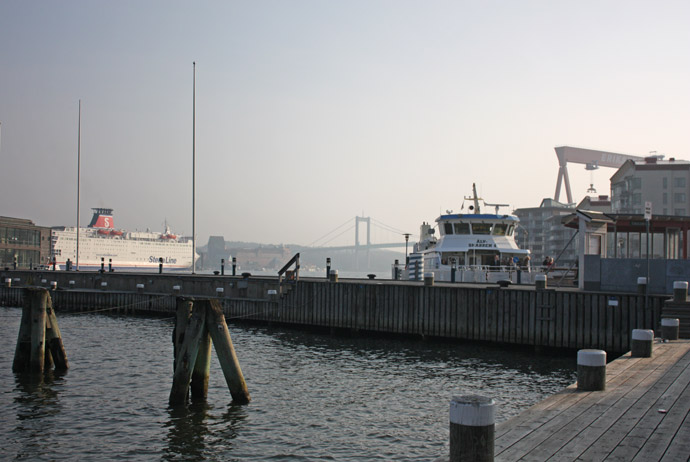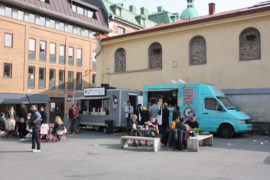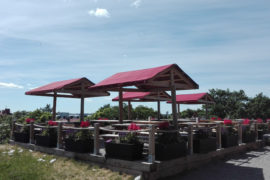The world’s largest scale model of the solar system is in Sweden – and it’s really, really big.
What do Arlanda airport, the City Museum and Stockholm’s premier concert venue all have in common? Apart from being worthwhile stops for visitors to the Swedish capital, they’re all connected by their shared role in a scientific art installation that now reaches from one end of the country to the other: the Sweden Solar System. And they’re not alone…
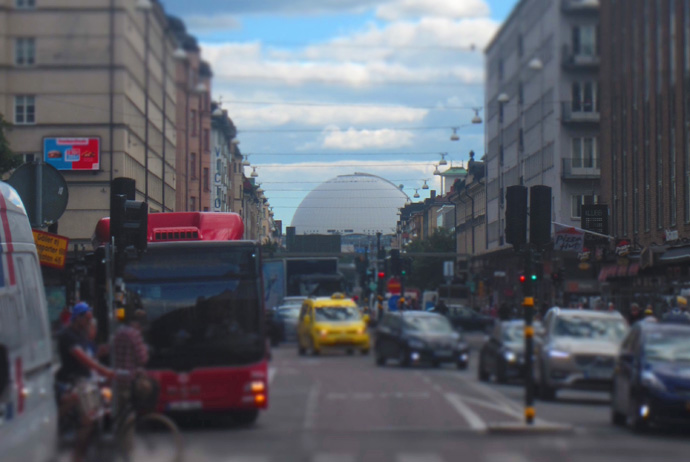
The Sun is in Stockholm
When it opened in 1989, the Ericsson Globe – the world’s largest spherical building – became one of Stockholm’s most iconic landmarks. Since then it’s welcomed some of the planet’s best musical acts, played host to the Eurovision Song Contest, and provided an impressive backdrop for countless tourist photos.
For most locals, ‘The Globe’ is a nice enough part of the urban landscape and a decent place to see a show, but that’s where their interest in the building ends.
For Nils Brenning, a professor at Stockholm’s Royal Institute of Technology (KTH), it means a lot more. One day in the mid-1990s, as he cycled past the building on his way to work, it occurred to him that it could be the beginning of something big. Very, very big.
Brenning called his colleague, Professor Gösta Gahm. What if Globen was not just a concert venue, but the starting point of an art installation that spanned the breadth of Stockholm? What if the world’s largest spherical building was also the centrepiece of the world’s largest model of the solar system, with a scale of 1:20,000,000?
Gahm was inspired by Brenning’s idea, and so were others; enquiries sent to potential host institutions for models of the various planets were met with enthusiasm, and coverage of the project by press outside the capital made it clear that the Stockholm Solar System – or SSS – had captured the collective imagination.

In fact, interest in the project developed to the point that the first ‘S’ in its acronym soon had to be given a new meaning. The Stockholm Solar System became the Sweden Solar System: a planetary project on a national scale, which, like our understanding of our little corner of the galaxy, has steadily grown over the years.
At the time of writing, the Sweden Solar System comprises 19 representations of various celestial bodies – the Sun, the eight planets (plus everybody’s favourite dwarf planet, Pluto) and an array of other space oddities including comets and asteroids – stretching all the way from Kiruna in the north to Karlshamn in the south.
Seeing the Sweden Solar System
Seeing the Sweden Solar System in full is a big undertaking, partly because it’s so spread out, but also because it’s not very well signposted. Getting from one part of the solar system to another is a bit like geocaching: in order to find what you’re looking for, you have to look at the world through a slightly different lens. The rewards can be in unlikely places.

The first few planets are a stone’s throw from Globen, the huge ‘Sun’ that lies just south of central Stockholm. Mercury, for example, sits less than three kilometres away in Stockholm’s City Museum (renovation works mean that the 25cm-wide model is currently in storage).
Happily, Venus is easier to find: a brand-new model of Earth’s nearest neighbour, flanked by five enigmatic depictions of the planet’s various movements and cultural connotations, sits outside Vetenskapens Hus at the AlbaNova University Centre (take the T-bana to Tekniska Högskolan).
Fittingly, Earth can be found just outside the Cosmonova planetarium at Stockholm’s Natural History Museum, with the moon just a few small steps away (head to Universitetet on the T-bana, or take bus #50).
Less fitting is the pairing of Mars with the suburban shopping centre, Mörby Centrum, although the red glow that falls on the 35cm-wide sphere from the neon sign above a nearby department store is a nice touch, deliberate or otherwise.
Formerly represented by a circular flowerbed at Arlanda airport, Jupiter will soon have a new 3D model, as will Saturn, currently a blink-and-you’ll-miss-it orb hanging above the streets of Uppsala.
The depictions of Uranus and Neptune – located 146km and 229km from Globen respectively – are more eye-catching; and what’s more, they both say something about the places they call home. Steely Uranus was built at a nuclear power plant in Lövstabruk, where uranium is an important ingredient, while Neptune’s maritime associations made Söderhamn, a coastal town famous for fishing and sailing, an apt home for a shimmering model of the eighth rock from the sun.
Every piece of the Sweden Solar System is a work of art in its own right, reflecting both its creator’s personal style and the particular qualities of its cosmic subject. From the grave-like pillars of Pluto and Charon to the colourful hanging sculptures that represent Halley’s comet, no two models are exactly alike.
The Solar System is expanding
Twenty years on from Brenning’s big idea, the Sweden Solar System is still one of Sweden’s best-kept secrets. But even if many Stockholmers remain unaware of Globen’s second, symbolic meaning, the project continues to announce itself in new corners of the country.
Before long the scale model of the solar system have reached west as far as Gothenburg, and the Royal Astronomical Society is about to oversee a competition seeking proposals for new additions. Whether you’re in Stockholm for two days or backpacking through the whole country, the chances to see the Sweden Solar System keep on multiplying.
More info: swedensolarsystem.se


